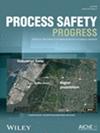2021年6月13日中国十堰市致命瓦斯爆炸人为因素分析
IF 1
4区 工程技术
Q4 ENGINEERING, CHEMICAL
引用次数: 0
摘要
摘要人为因素被认为是管道爆炸事故的主要原因。本文以十堰市燃气管道爆炸事故为研究对象,探讨了人为爆炸事故的路径。运用24模型,将事故原因分为组织和个人两个层次。组织层面的原因进一步分为两个要素,即安全文化和安全管理体系。个人层面的原因进一步分为个人能力和安全行为——不安全的行为和不安全的条件。24模型方法进一步将不安全行为和不安全条件细化为子类别,以提高清晰度。基于24模型,确定新延市事件是由个人能力差距造成的,包括安全知识不足,安全意识低,安全习惯不良。还确定了与能力因素、安全管理体系和安全文化相关的原因。此外,根据事故原因所起的作用,建立了识别因素之间的关系,建立了事故的传播路径。这种明确性有助于加强与人为因素有关的安全措施。本文章由计算机程序翻译,如有差异,请以英文原文为准。
Human factors analysis of a fatal gas explosion on June 13, 2021 in Shiyan City, China
Abstract Human factors are considered the main cause of accidents involving pipeline explosionf. In order to identify the path of human‐induced explosion accidents, a gas pipeline explosion that occurred in Shiyan city of China is investigated thoroughly in this study. Applying the 24Model, the causes of the accident are classified into two levels: organizational and individual. The organizational level causes are further categorized into two elements, namely safety culture and safety management system. The individual level causes are further categorized into personal abilities and safety behaviors—both unsafe actions and unsafe conditions. The 24Model methodology further refines unsafe actions and unsafe conditions into subcategories for increased clarity. Based on the 24Model, it was determined that the Shinyan City incident was caused by gaps in personal abilities, which included insufficient safety knowledge, low safety awareness, and bad safety habits. Causes related to ability factors, safety management system, and safety culture were also identified. In addition, the relationship between the identified factors was developed according to the roles played by the accident causes, and the propagation path of the accident was established. This clarity helps to strengthen safety measures related to human factors.
求助全文
通过发布文献求助,成功后即可免费获取论文全文。
去求助
来源期刊

Process Safety Progress
工程技术-工程:化工
CiteScore
2.20
自引率
10.00%
发文量
99
审稿时长
6-12 weeks
期刊介绍:
Process Safety Progress covers process safety for engineering professionals. It addresses such topics as incident investigations/case histories, hazardous chemicals management, hazardous leaks prevention, risk assessment, process hazards evaluation, industrial hygiene, fire and explosion analysis, preventive maintenance, vapor cloud dispersion, and regulatory compliance, training, education, and other areas in process safety and loss prevention, including emerging concerns like plant and/or process security. Papers from the annual Loss Prevention Symposium and other AIChE safety conferences are automatically considered for publication, but unsolicited papers, particularly those addressing process safety issues in emerging technologies and industries are encouraged and evaluated equally.
 求助内容:
求助内容: 应助结果提醒方式:
应助结果提醒方式:


